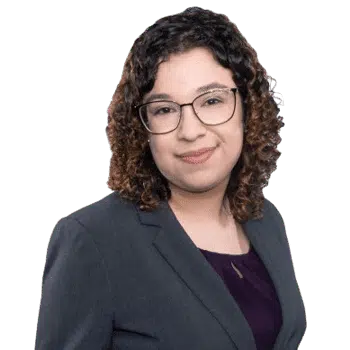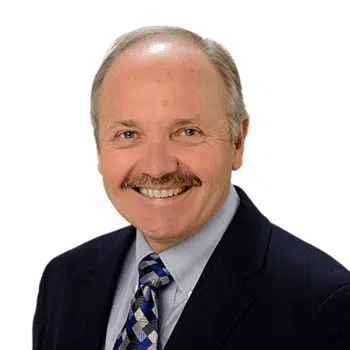Article Overview
- Many different drugs of addiction exist.
- The addiction potential of a drug is often linked to physical dependence on the drug.
- Addiction often starts when a person craves larger and more frequent doses of a substance.
- Addiction and overdoses have surged in Ohio during the COVID-19 pandemic.
Addictive Drugs
Many different addictive drugs exist, with similarities and differences between them. Although they are all addictive, the potential for abuse between them varies. Someone’s personal risk factors for becoming addicted to a drug can also vary. Understanding these phenomena is key to understanding becoming addicted to these substances.
- Alcohol Abuse & Addiction
- Benzodiazepine Abuse & Addiction
- Cocaine Abuse & Addiction
- Codeine Abuse & Addiction
- Fentanyl Abuse & Addiction
- Gabapentin Abuse & Addiction
- Heroin Abuse & Addiction
- Hydrocodone Abuse & Addiction
- Klonopin Abuse & Addiction
- Marijuana Abuse & Addiction
- Meth Abuse & Addiction
- Morphine Abuse & Addiction
- Opioid Abuse & Addiction
- Valium Abuse & Addiction
- Vicodin Abuse & Addiction
- Xanax Abuse & Addiction
Ohio Drug Use: Why Is It on the Rise?
Substance use and overdose rates in Ohio have recently spiked, largely due to the effects of the COVID-19 pandemic. Emerging studies show that after lockdowns began in Ohio, drug overdose rates rose to their highest level in years. Researchers are still unsure why substance use rose during the pandemic, but many believe the stress and anxiety caused by the pandemic — coupled with extra free time — played a significant role.
Ohio Substance Abuse Statistics
Ohio consistently ranks as one of the top five states in terms of substance abuse and overdose rates. Though it is difficult to know the exact number of people who struggle with addiction, indicators show that drug use in Ohio occurs at a higher rate than most states.
Opioid drugs, including both prescription and illicit opioids, carry a high risk for abuse, addiction and overdose. In 2018, Ohio doctors wrote 53.5 opioid prescriptions for every 100 people. Pre-pandemic statistics also found over 10% of Ohioans reported using illicit drugs within the last month, while 18% reported past-year use.
This Season, Give Yourself the Gift of a Fresh Start.
Whether you are struggling with addiction, mental health or both, our expert team is here to guide you every step of the way. Don’t wait— reach out today to take the first step toward taking control of your life.
Drug overdoses had peaked in 2018, with almost 5,000 Ohioans dying from accidental overdoses that year. Since the COVID-19 pandemic began, however, drug overdose deaths in Ohio have skyrocketed. Ohio had 481 overdose deaths in June 2020 — the state’s highest recorded number of overdose deaths in a single month. Ohio’s drug overdose statistics for 2020 are projected to be the highest they have ever been in a single year.
Columbus, Ohio
Columbus, the state’s capital, is located in Franklin County in the heart of Ohio. With a metro population of over two million people, Columbus is also the state’s most populous city. According to the Ohio Substance Abuse Monitoring Network, cocaine, heroin, methamphetamine, sedative-hypnotics and the deadly opioid fentanyl are all highly available for illicit use in Columbus. In the first quarter of 2020, fentanyl was present in over 70% of overdose deaths in Franklin County.
Though Ohio drug overdoses peaked in 2017 and decreased until the pandemic began, Columbus overdose rates have only continued to grow. The Franklin County Coroner’s Office issued a report for 2020, which warned that January 2020 had a 74.4% increase in overdose deaths when compared to January 2019. Overdose deaths in February were even worse, with a 117.9% increase when compared to the previous year. These statistics show rates were rising even before the pandemic began to affect Ohio.
Heroin, Opioids and Fentanyl
Opioids, including heroin and fentanyl, contribute to many overdose deaths in Ohio and throughout the country.
Opioids
Opioids are a class of drugs that includes both prescription opioids like hydrocodone and illicit opioids like heroin. When people use the term “opioids,” they are normally referring to prescription opioids. Opioids are used medically to treat severe pain, but they can be addictive and carry a risk of overdose.
Heroin
Heroin is a powerful and illegal drug. It is normally injected and used by itself or with other drugs. Heroin is not used for medical purposes because it is highly addictive and has a greater overdose risk than many other drugs. Heroin addiction can increase the risk of overdose, and intravenous heroin use can lead to infections.
Fentanyl
Fentanyl is one of the strongest opioids currently available. The drug is used as a prescription drug in hospitals, but it is rarely prescribed outside of a health care setting due to its strength. Fentanyl is about 100 times stronger than morphine, and it only takes a small amount to cause a fatal overdose. Fentanyl is sometimes used on its own by people with a fentanyl addiction, but it is also commonly combined with other drugs.
What Makes Drugs Addictive?
To understand what makes drugs addictive, it is important to first understand what addiction is: compulsive drug use despite harmful consequences.
Often, addiction occurs because a person becomes physically dependent on a substance. In physical dependence, a person cannot stop taking a substance without unpleasant withdrawal symptoms. In addition, taking the substance may trigger the brain’s reward system. This leads to a cycle where a person may feel good if they take a drug and may experience withdrawal symptoms if they stop.
The Drug Enforcement Administration schedules both legal and illicit substances by addiction potential. Drugs that impact the brain and body and put a person at high risk of abuse, dependence and addiction are Schedule I (illicit) or Schedule II (legal) drugs. Drugs with a lower addiction potential are Schedule III, IV, and V.
See More: Prescription Drug Abuse Hotline
How Addiction Often Starts: Causes & Risk Factors
When a person starts taking drugs — whether prescribed or illicit — they may start feeling like they need bigger and more frequent doses to get the same effect as when they first started the drug. This can snowball, causing people to take increasingly high doses of potent drugs. Heroin use is an example. Overall, 75% of heroin users state that the first opioid they took was through a prescription.
Many different addiction risk factors exist. Some of the risk factor categories include:
- Community risk factors: Living in a high-crime area where drug use is common is a risk factor for drug abuse and addiction.
- Minority status risk factors: Cultural and language barriers, as well as low societal expectations, can increase the risk of drug use.
- Family status risk factors: Parental abuse, neglect and familial substance use are risk factors for drug use.
- Personal vulnerability: A person may have individual characteristics making them more prone to drug abuse. These include physical and mental health problems.
- Problems in childhood and adolescence: Struggles during a person’s early years can put them at risk for drug abuse. These include emotional and self-esteem problems, dropping out of school and vulnerability to peer pressure.
Resources and Solutions
The Ohio Department of Mental Health and Addiction Services (OhioMHAS) offers a range of resources for people with addiction and their families. OhioMHAS also provides support services to the general public, sharing resources with schools and communities to help reduce the prevalence of substance use.
In 2019, Governor DeWine established the RecoveryOhio Advisory Council to help further decrease substance use and address the needs of those struggling with addiction. Ohio also offers a crisis text line that allows people with addiction to be connected with a crisis counselor. This 24/7 service can be rapidly accessed by texting “4hope” to 741-741.
The struggle against addiction can be difficult, but it’s a journey you don’t have to take alone. The Recovery Village Columbus offers comprehensive addiction treatment resources for Ohioans struggling with addiction. We encourage you to reach out to one of our understanding representatives to learn how you can take the first step toward lifelong addiction recovery.









